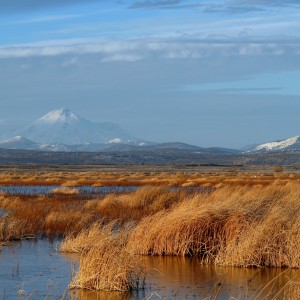The Stream, November 11: Millions of Children in Africa At Risk From El Nino
The Global Rundown |
More than 10 million children in Africa could face hunger, disease, and water shortages from El Nino, the United Nations said. China proposed a new, higher cap on annual water consumption, Chile reported that its copper mines will be getting as much as half of their water from desalination in 10 years, and the International Energy Agency predicted that the world will spend trillions of dollars on renewable energy by 2040. The public and some political officials in Brazil called for stricter mining regulations after the recent dam disaster in Minas Gerais. A large water district in Southern California decided to move forward with plans to buy islands in the Sacramento-San Joaquin River Delta.
“Vale has been drilling and dumping around Minas Gerais for 70 years. After a disaster of this scale, it can’t issue a laconic statement as if it weren’t obliged to act immediately.”–Miriam Leitão, a columnist, writing in O Globo about the recent dam disaster at an iron ore mine in Brazil that killed at least six people and contaminated nearby waterways. Some policy makers are considering tighter mining regulations amid public concern about the disaster. (Guardian)
By The Numbers |
11 million children Number at risk from hunger, disease, and water shortages due to El Nino-linked weather events in southern and eastern Africa, according to the United Nations Children’s Fund. BBC
670 billion cubic meters Annual water consumption cap China plans to implement by 2020, an increase from the current 600 billion-cubic-meter cap. Reuters
$7.4 trillion Amount estimated to be invested globally in renewable energy by 2040, according to the International Energy Agency. Guardian
Science, Studies, And Reports |
Copper mining companies operating in Chile are increasingly using desalinated water for their operations and are likely to get half of their water needs from seawater by 2026, according to a report by Chile’s copper commission. The industry’s consumption of fresh water is predicted to decline 19 percent over the same time period. Reuters
On The Radar |
The Metropolitan Water District of Southern California, the region’s biggest drinking water supplier, is moving forward with plans to purchase four islands in the Sacramento-San Joaquin River Delta. The water district said the land purchase would allow for wetland restoration efforts to offset environmental degradation from water works projects and could also make it easier for the state to build a large tunnel project sending water to Southern California. Reuters
A news correspondent for Circle of Blue based out of Hawaii. She writes The Stream, Circle of Blue’s daily digest of international water news trends. Her interests include food security, ecology and the Great Lakes.
Contact Codi Kozacek







Leave a Reply
Want to join the discussion?Feel free to contribute!